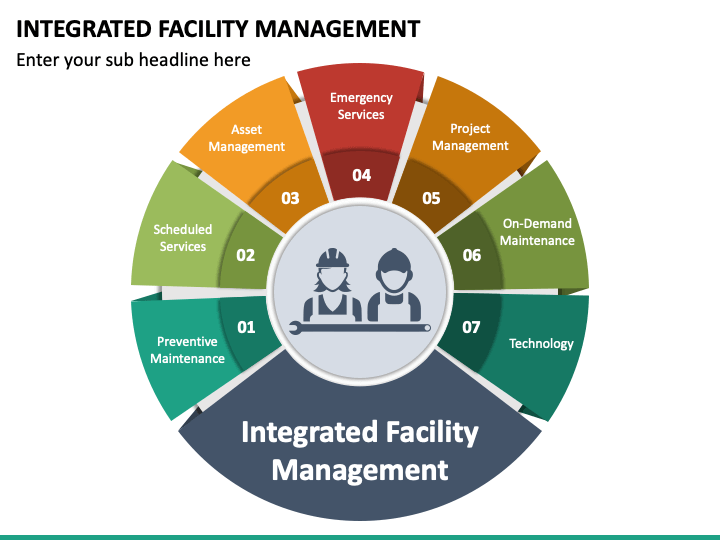How Total Facility Management Can Improve Operational Efficiency and Minimize Costs
How Total Facility Management Can Improve Operational Efficiency and Minimize Costs
Blog Article
Exactly How Total Facility Management Improves Maintenance and Operations
Total Facility Management (TFM) represents a transformative shift in just how companies approach upkeep and procedures. By leveraging data-driven techniques and integrated technology, TFM not only prepares for and alleviates possible problems yet likewise optimizes source allowance and improves productivity. The effects of embracing such an extensive structure prolong beyond plain efficiency; they touch on sustainability and long-lasting asset conservation. As we check out the multifaceted advantages of TFM, one may ask yourself exactly how these techniques can be tailored to address one-of-a-kind operational obstacles.
Enhanced Upkeep Techniques
Boosted Upkeep Techniques are essential for enhancing the efficiency and longevity of facilitiess. These methods encompass a methodical strategy to maintenance that emphasizes positive actions, predictive analytics, and condition-based tracking. By applying such strategies, organizations can successfully lower unplanned downtimes and reduce operational disruptions.
One vital part of boosted upkeep is the use of data-driven decision-making tools. These tools enable facility supervisors to analyze historical performance data, determine patterns, and forecast prospective failures prior to they occur. This anticipating upkeep method not only expands the life process of tools yet also improves security and conformity requirements.
Educating and equipping upkeep workers are similarly crucial in implementing boosted strategies (Total Facility Management). Trained team can execute regular examinations and address small problems before they escalate. Additionally, adopting a comprehensive asset management system promotes monitoring of tools standing, upkeep background, and organizing of safety nets
Streamlined Operational Workflows
Optimizing functional process is critical for the general effectiveness of facility management. By implementing structured processes, companies can minimize redundancies, lessen hold-ups, and boost performance. A well-structured operational workflow permits facility managers to allot sources efficiently, guaranteeing that tasks are finished in a timely fashion.
One trick aspect of structured process is the integration of modern technology. Using facilitiess management software can automate regular tasks such as job order management, supply tracking, and organizing. This not only conserves time however also supplies real-time data, making it possible for informed decision-making - Total Facility Management. In addition, clear communication networks amongst employee foster collaboration and liability, even more boosting operational effectiveness.
Systematizing procedures is one more critical part. Developing finest techniques helps guarantee that all personnel are aligned in their method, minimizing the chance of errors and improving service shipment. Routine training and updates on process procedures additionally play a vital role in maintaining consistency and effectiveness.
Eventually, streamlined operational process contribute to a much more responsive facility management system, enabling organizations to focus on tactical efforts instead of being slowed down by administrative concerns. By prioritizing efficiency, facility managers can considerably enhance the overall performance of their operations.
Proactive Issue Resolution

Routine examinations and keeping track of systems play an essential function in this procedure, allowing facility supervisors to gather data and prepare for potential failures. Furthermore, cultivating open communication channels amongst team members motivates the very early coverage of concerns, even more promoting prompt resolutions.
Carrying out a thorough facility management software application can enhance the monitoring of upkeep tasks and issue reporting, offering useful understandings right into recurring issues and their source. This data-driven technique permits for notified decision-making and prioritization of resources.
Eventually, aggressive concern resolution not just maintains the honesty of facility procedures yet additionally boosts staff member satisfaction and safety and security. By spending in approaches that concentrate on avoidance, companies can develop an extra reliable and resistant functional atmosphere, setting a solid foundation for future growth and success.
Expense Effectiveness and Resource Management
Just how can companies accomplish a balance in between expense efficiency and reliable source management in facility operations? The assimilation of total facility management (TFM) offers a strategic structure that improves financial efficiency while enhancing resource allocation. By settling services, companies can enhance operations, lower redundancies, and take advantage of economies of range.
Effective source management starts with an extensive assessment of existing find this properties and operational procedures. Utilizing data analytics, companies can identify underutilized resources and address ineffectiveness. This informed strategy here makes it possible for the application of targeted maintenance timetables, consequently prolonging asset life and minimizing unplanned downtime.

Educating and development of facility management employees additionally boost expense performance by equipping them with the skills needed to manage resources deliberately. Inevitably, by embracing a holistic approach to facility management, companies can achieve considerable cost financial savings while ensuring that functional performance stays a top concern.
Sustainability and Ecological Effect
The assimilation of total facility management (TFM) not just enhances cost effectiveness but additionally plays a critical role in advertising sustainability and decreasing ecological effect. By adopting a holistic strategy to facility procedures, TFM facilitates the application of lasting techniques that minimize source intake and waste generation.
One of the key parts of TFM is the optimization of power use. This consists of the adoption of energy-efficient modern technologies, routine upkeep of cooling and heating systems, and the application of smart building management systems. These procedures not only lower energy costs however also significantly decrease greenhouse gas exhausts.
Furthermore, TFM advertises the usage of lasting materials in facility upkeep and restoration projects. By prioritizing eco-friendly items and techniques, facilitiess can reduce their total ecological impact while promoting much healthier interior atmospheres.

Final Thought
In final thought, Total Facility Management considerably enhances maintenance and procedures through methodical approaches that emphasize anticipating analytics and condition-based surveillance. TFM promotes sustainable techniques, ultimately leading to boosted facility management outcomes and a culture of constant improvement within organizations.
Total Facility Management (TFM) stands for a transformative change in just how organizations approach maintenance and operations. Using facilitiess management software application can automate routine jobs such as work order management, supply monitoring, and scheduling.How can companies achieve an equilibrium in between cost performance and efficient resource management in facility operations? The assimilation of total facility management (TFM) gives a strategic framework that enhances financial efficiency while maximizing source allocation.In conclusion, Total Facility Management significantly boosts upkeep and procedures through systematic approaches that highlight anticipating analytics and condition-based surveillance.
Report this page